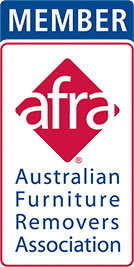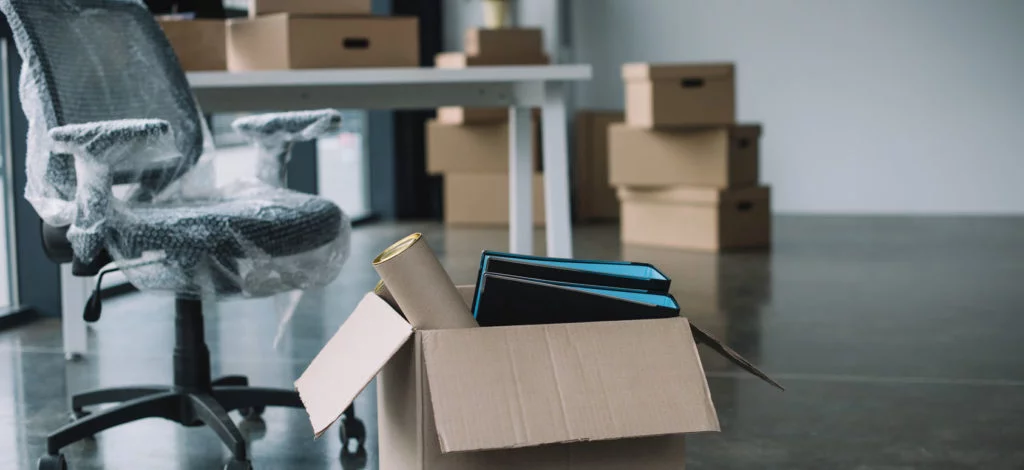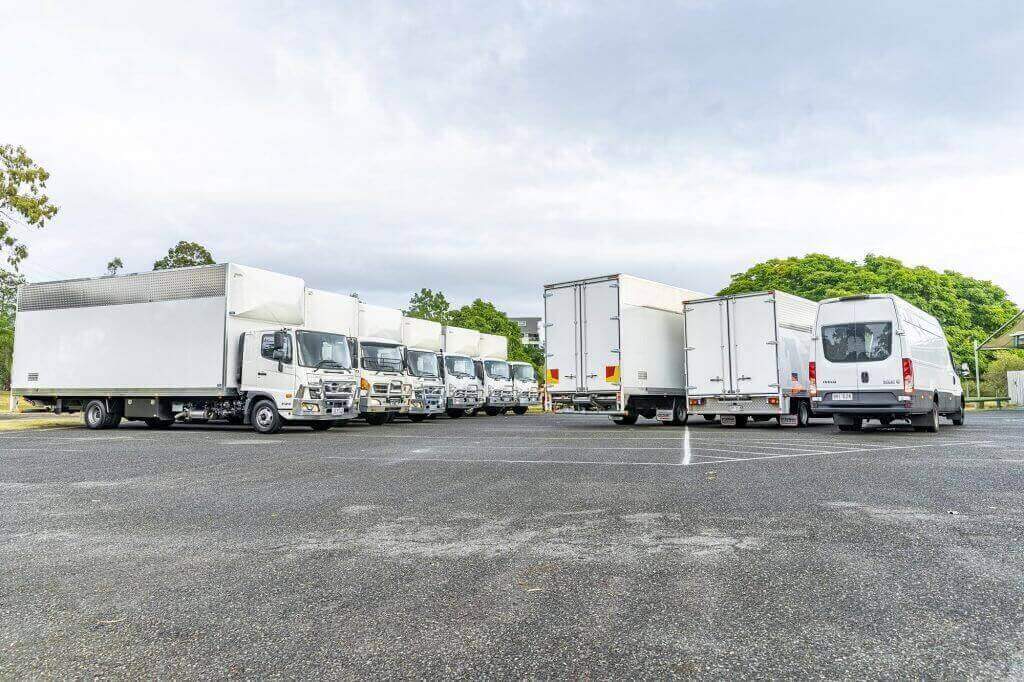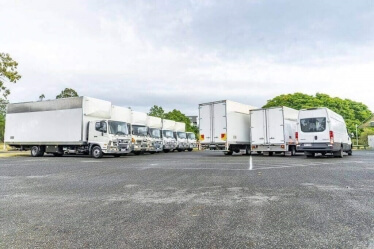The Basics of Office and Business Relocations
An office relocation can be a complex and challenging endeavour. Whether expanding to a larger space, moving to a new location, or consolidating multiple offices, proper planning and execution are crucial for a successful transition. Business and office moves involve various moving parts, from coordinating logistics to minimising downtime and ensuring seamless continuity of operations.
This blog post will explore the basics of office and business relocations, providing valuable insights and tips to help you navigate this significant undertaking with he help of a reliable moving company.
Start with a Comprehensive Plan
Before you start packing boxes, having a clear and practical plan for your office move is essential. Start by understanding why you’re moving, what goals you’re trying to achieve, and when you need to be out of your current space. Set a realistic budget early on so there are no surprises. Think about what your business needs in the new space, things like IT systems, furniture, and equipment, and list everything that needs to be done. A solid plan and a simple checklist will keep things on track and make the relocation process much less stressful.
Form an Office Relocation Team
Assigning a dedicated relocation team or project manager is crucial for a smooth office relocation. This team will oversee the moving process, coordinate tasks, and ensure effective stakeholder communication. Representatives from different departments or teams will be included to gather input and address specific requirements. You can even post it on the company website so everyone knows what’s happening. The relocation team should collaborate closely with external service providers, such as moving companies, the building manager, and the IT department, to ensure a coordinated effort and a successful relocation to the new building.
Assess the New Office Space
Before the move, thoroughly assess the new office or business location. Consider factors such as layout, infrastructure, and amenities. Evaluate whether the space can accommodate your current and future needs and identify any necessary renovations or modifications. Plan the placement of departments, workstations, and common areas to optimise workflow and collaboration with the office manager. Understanding the new space will help you create a detailed floor plan and ensure a smooth transition for your employees and operations.
Communicate with Employees
Clear and timely communication with employees is essential throughout the relocation process. Keep your employees informed about the reasons for the move, the timeline, and how it will impact their roles and responsibilities. Address any concerns or questions they may have and involve them in the planning process where appropriate. Provide regular updates to ensure transparency and maintain employee morale and productivity during the transition.
Update Technology and IT Infrastructure
Office relocations often involve significant changes to technology and IT infrastructure. Work closely with your IT team or external providers to plan the relocation of servers, networking equipment, and telecommunication systems. Assess the new space for cabling, internet connectivity, and power requirements. Plan for installing and configuring IT equipment well in advance to minimise downtime and ensure a seamless transition. Consider the potential need for additional cybersecurity measures to protect sensitive data during the move.
Coordinate with Service Providers
Business relocations require coordination with various service providers. Contact utility companies to schedule the disconnection and reconnection of services such as electricity, water, and internet. Coordinate with moving companies to determine logistics, packing, and transportation schedules. If necessary, engage professionals in specialised tasks such as installation, equipment setup, or office cleaning. By working closely with service providers, you can ensure a coordinated effort and avoid unnecessary disruptions.
Plan for Business Continuity During the Moving Process
Minimising downtime during an office or business relocation is crucial to maintain productivity and customer satisfaction. Develop a business continuity plan that outlines strategies to ensure uninterrupted operations during the move. Consider options such as staggered employee shifts, remote work arrangements, or temporary space if necessary. Back up important data and documents to prevent any loss during the transition. Planning can mitigate potential disruptions and ensure a smooth continuation of your business activities.
Update Address and Notify Stakeholders
Notify all relevant stakeholders about your business relocation. Update your address on official documents, websites, and online directories. Inform clients, vendors, and suppliers about the move well in advance, providing them with the new address and contact details. Redirect mail and update subscriptions or service agreements to reflect the new location. By proactively communicating the relocation, you can maintain strong relationships and minimise any potential disruption in communication or service.
Conduct a Detailed Inventory
Before the move, conduct a detailed inventory of all office assets, including furniture, equipment, and supplies. Take their current condition and assess whether any items need repairs or replacements. This inventory will help you track and account for all assets during the move and ensure that everything arrives safely at the new location. It can also assist with insurance claims in case of any loss or damage during the relocation process.
Develop a Packing and Labelling System
A well-organised packing and labelling system is crucial for an efficient office relocation. Establish a standardised process for packing items, ensuring they are adequately protected and labelled. Use colour-coded labels or numbering systems to identify items and match them with their designated locations in the new space. Clear labelling facilitates a smooth unpacking process and helps employees quickly locate and set up workstations in the new environment.
Consider Furniture and Equipment Disassembly
Depending on the size and complexity of your office furniture and equipment, you may need to disassemble certain items for the move. Consult the manufacturer’s guidelines or hire professionals specialising in furniture and equipment disassembly to ensure safe and efficient disassembly. Keep track of all screws, bolts, and other small parts by placing them in labelled bags or containers. Taking apart large items can make transporting them easier and save space in the moving truck.
Plan for Secure Data and Document Handling
Ensure sensitive data and confidential documents are handled and transported securely during relocation. Consult with your IT team or a data management specialist to develop a plan for safeguarding digital assets and backing up critical data before the move. Consider using secure file boxes or encrypted storage for physical documents during transit. Assign responsible individuals to handle and protect sensitive information throughout the relocation.
Schedule Time for Setup and Testing
Allocate sufficient time for setting up and testing IT systems, equipment, and networks in the new space. This includes configuring computers, printers, and other devices and testing internet connectivity and telecommunication systems. Conduct thorough testing to ensure all systems function correctly before employees resume work. Planning for this setup time will minimise disruptions and allow a seamless transition to normal business operations.
Communicate the New Office Layout and Policies
Before employees start working in the new space, provide them with the updated layout and any new policies or guidelines. This information should include seating arrangements, meeting room usage, shared spaces, and other relevant office protocols. Communicate any procedure changes or expectations to ensure a smooth adjustment for employees in the new environment.
Evaluate the Need for Professional Cleaning
It’s a good idea to book professional cleaners for both your old and new offices. Giving the old place a proper clean shows respect for the next tenants, and might even be part of your lease agreement. As for the new office, a fresh, clean look can make a big difference. It helps the space feel welcoming and ready for your team to hit the ground running. A tidy, organised workspace sets the right tone from day one and can boost everyone as they settle in.
Conclusion
Moving your business isn’t a walk in the park, it takes time, coordination, and the right people to do it smoothly. That’s where working with experienced pros pays off. Optimove has helped plenty of businesses make the switch with minimal hassle. Whether disassembling furniture or ensuring sensitive data is handled securely, their team knows what they’re doing. If you’re planning a move, contact them and see how they can make the process easier for you and your team.








































